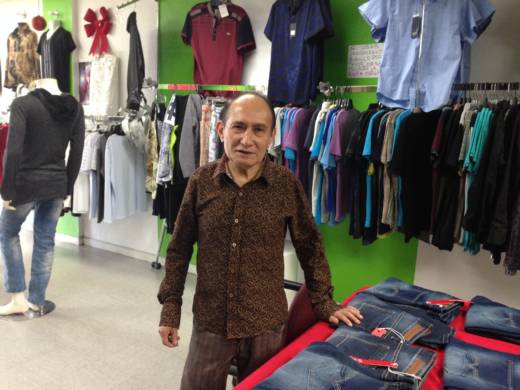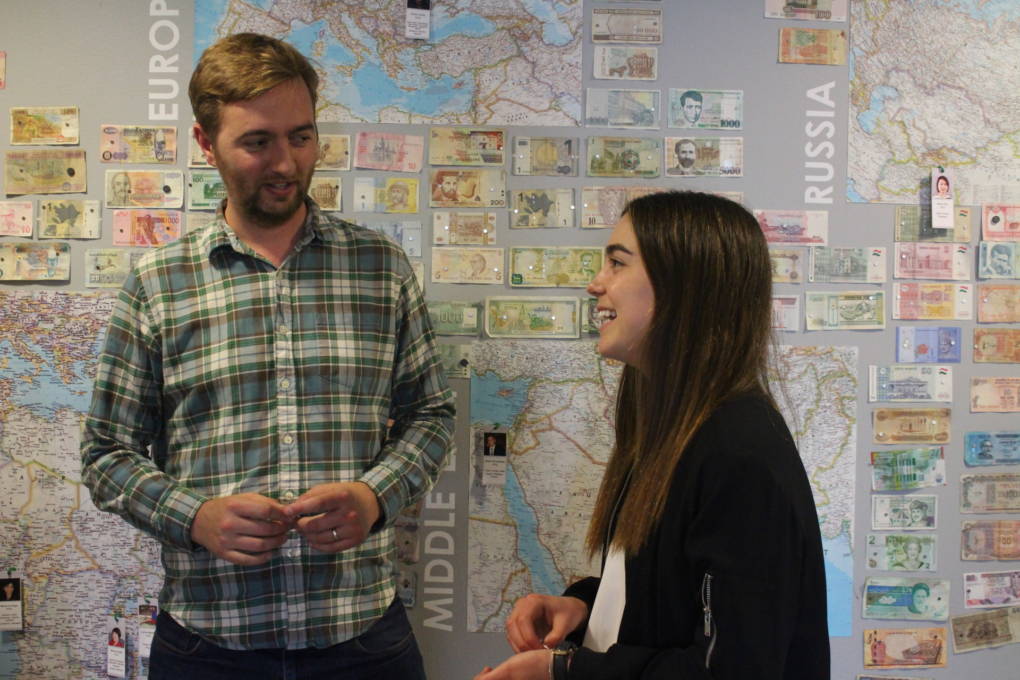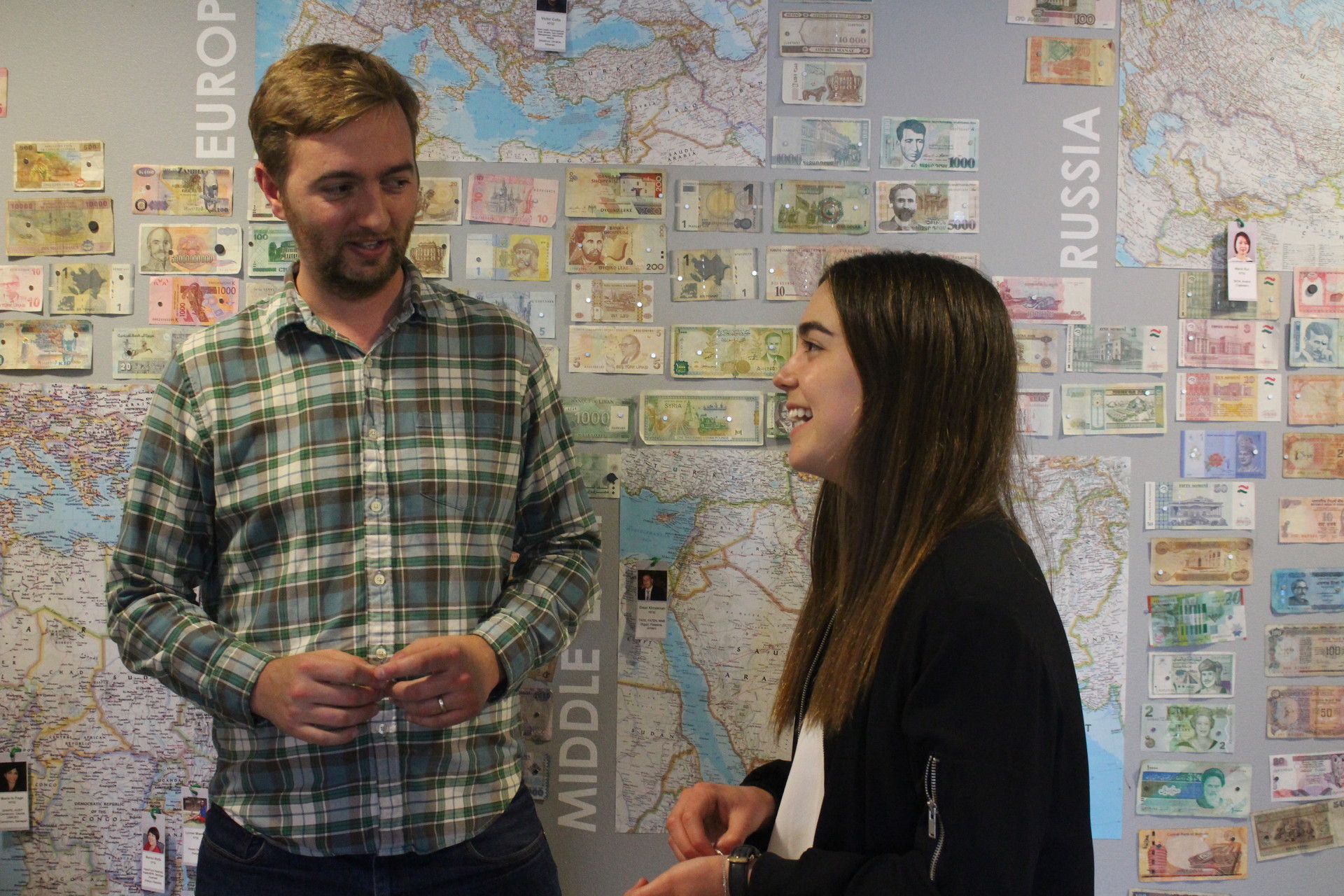When Raul Maya first came to the U.S. from southern Mexico, he worked as a dishwasher at a restaurant making less than $5 an hour. Then he moved up to working as a busboy and cashier. It took him years to save enough money to open up a menswear shop, Fashion Palace, in Oakland's predominantly Latino Fruitvale district.
Entrepreneur in a Low-Income Area? Good Luck Getting a Bank Loan

Are Low-Income Businesses Shortchanged by Big Banks?
Most of Maya's customers live nearby. On a recent afternoon, they streamed into the store from shifts at restaurants and construction sites; some still wore paint stains on their clothes. They came looking for suits and Maya's own designs of long-sleeved cotton shirts to wear at weddings and events.
"Everyone going to parties around here, I help them get dressed up," said Maya in Spanish, and chuckled. "Sometimes they'll end up buying more clothes because they see they look great!"
But there's been a nagging issue for him and other small-business owners he knows in the neighborhood: access to credit through banks, which generally offer the lowest interest rates in the market.
Businesses in lower-income census tracts in Alameda County, including the area where Maya is located, received significantly fewer bank loans and credit cards than the wealthiest business districts in 2015, according to a KQED analysis of the most recent federal public data.
Economists say this points to an unmet need for bank credit among entrepreneurs in predominantly minority and underserved communities. That in turn, pushes small-business owners to get more expensive loans that can eat up their profits and limit their ability to succeed.
Large banks and other lenders counter that many entrepreneurs -- particularly in the communities hardest hit by the Great Recession -- struggle to meet the criteria that qualify them for responsible financing.
[bizLoanNoLoans]Rates Higher For Business Owners with Low Credit
Three years ago, Maya ran into a serious cash-flow problem and tried applying for a credit card from his bank, but was rejected.
"They said my credit score wasn't high enough. I never got a loan or credit card, not even for $50, from a bank," said Maya, who turned instead to a more costly loan for $5,000 from a non-bank lender nearby.
He did not want to name the lender, as he is still paying them an additional $3,000 in interest.
"You know that they are charging you too much in interest, but because of your economic situation you have to take it," said Maya. "Although later you are in hell and it's a long road to finish paying."
Maya's loan adds up to about a 35 percent annual percentage rate (APR). But he could have paid much more. Hundreds of thousands of borrowers are facing triple-digit interest rates in California, according to the state's Department of Business Oversight.
Lending companies need to charge more to provide much needed access to credit for customers who would not receive it at banks, said Thomas Leonard, executive director of the California Financial Service Providers Association, which represents dozens of non-bank lenders.
"Rates are going to be higher for customers that have a lesser amount of credit. And what you find is that the interest rates become really a product of risk," said Leonard, a former banker.
'Unequal Access' To Credit
Latinos are starting businesses at a faster rate than other groups in the country. But their ventures have higher failure rates or grow at a slower pace partly because they have less capital, said Robert Fairlie, an economist at UC Santa Cruz.
"They're less likely to get bank loans. They're less likely to be able to tap into family and friends' wealth or neighborhood wealth. So all those things kind of work against them," said Fairlie, who has researched minority-owned enterprises for two decades.
That unequal access to credit, said Fairlie, contributes to the massive wealth gap in this country because small businesses generate jobs and wealth for their communities.
The median wealth of white households in this country in 2011 was $110,000, compared with less than $8,000 for Latinos and African-Americans, according to the U.S. Census. Median wealth -- also known as net worth -- is the difference between one's assets, such as income, savings and a home -- and liabilities, or debts.
Spokespeople for Wells Fargo and JPMorgan Chase, the largest banks in the U.S., said that increasing lending to small businesses in diverse communities is a priority.
"We want to make every responsible loan we possibly can to help creditworthy small businesses that are seeking credit," wrote Ruben Pulido, a spokesman for Wells Fargo in San Francisco. He added that credit-readiness, including the ability of small-business owners to show they are able to repay, is a top limiting factor in making more loans.
Both banks are donating and lending millions of dollars to nonprofits in the Oakland area. Those nonprofits work with diverse and lower-income small-business owners to help them get access to credit. This means training them on how to qualify for loans, and relending money from the big banks to these entrepreneurs.
The banks are obligated to help meet the credit needs of the communities where they operate under the Community Reinvestment Act (CRA), a federal law that was passed almost 40 years ago. The law has increased the flow of credit to lower-income areas, according to various studies.
Still, the business district where Raul Maya's store is located received only 45 loans and credit card lines of $100,000 or less in 2015, far fewer than wealthier districts in the city with a comparable number of businesses, according to data reported by large financial institutions under the CRA. A recent study of the Los Angeles, San Diego and Chicago areas by the Woodstock Institute found disparities in bank lending by income and race.
KQED focused on loans of $100,000 and under because, according to experts, they are most likely to support small local businesses.
The federal agency that supervises and grades big national banks on their CRA performance, the Office of the Comptroller of the Currency, has stated that it is aware more work is needed to address "important remaining issues" on the law's implementation. The OCC has been reviewing its examination procedures in an effort to make them more rigorous.
[SmallBizAmountLoans]
Crowdfunding As An Inexpensive Alternative
After getting his high-interest loan through the non-bank lender, Maya found out he could get an inexpensive loan through the crowdfunding website Kiva. The nonprofit offers entrepreneurs in the U.S. and abroad a platform to fundraise for loans with zero interest rates.
"Business ownership is a great way to build wealth. (But) the wealth gap persists. So what we're trying to do is just break that paradigm," said Jonny Price, head of Kiva's U.S. operations.
With the blessing of the city of Oakland, the organization has ramped up crowdfunding for local small-business owners. Kiva is also trying a new tactic in the Fruitvale by meeting face to face with entrepreneurs who have technical or language barriers.

One Tuesday morning, a dozen women entrepreneurs, some with children in tow, huddled around a table at Maya's store and lent $100 to each other through Kiva. Then they become eligible to start fundraising up to $2,000 from the organization's worldwide pool of lenders.
Bety Ugalde, a single mom of three, sells shoes imported from Mexico. She said her business is taking off. Before opening it, she used to work two jobs as a cook, sleeping only three hours some nights, but was still unable to afford her rent.
"Now I feel happier because I have this business and a half-time job and I can make ends meet," said Ugalde in Spanish. She added she plans to use her loan to stock more merchandise.
Overseeing all this activity at his store is Maya. He bustles about, bringing coffee and sweet bread to the women entrepreneurs at the weekly meetings.
"What's nice is that you can lend that money again to a new person who's starting," said Maya. "I tell them, we have to be united. We've got to support new people coming in."
The group that meets at Maya's shop has now grown to about 70 people.
